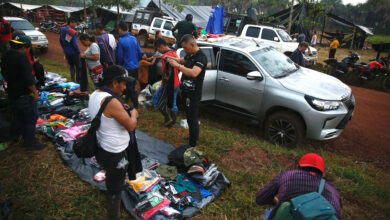Protesters in Sri Lanka mark 100 days of demonstrations

Colombo, Jul 17 (EFE).- Sri Lanka’s anti-government demonstrators held a vigil overnight in memory of those who lost their lives during the massive protests in the island nation, which completed 100 days on Sunday, and which achieved its main objective of getting President Gotabaja Rajapaksa to step down.
Although the first protests began around the end of March, when the island experienced a daily power outage lasting more than 13 hours, it was not until Apr.9 that thousands of people began occupying Galle Face park. in front of the Presidential Secretariat in Colombo, demanding Rajapaksa’s resignation.
Tents, portable restrooms and all kinds of facilities were set up in the park, which became the epicenter of the struggle against authority, with the protesters prepared for a long fight.
One hundred days later, even though the protests have already achieved the main aim by causing Rajapaksa to resign for his management of the economic crisis, the place continues to attract thousands of protesters daily who are now eager for the resignation of the interim president, Ranil Wickremesinghe.
“We said on the 50th day, we will be chasing away Gota (former President Gotabaya Rajapaksa) before the 100th day. We have achieved this. We have won a lot during these 100 days. We will continue our struggle,” 23-year old protester Manodhya Jayaratne told EFE.
“We have achieved several victories. Now we are saying that we will get rid of Ranil (Wickremesinghe) before the 150th day,” he added.
Since the beginning of the protests, at least nine people have died, eight of them on May 9, when a clash between government supporters and the protesters triggered clashes across the country, leaving also more than 200 others wounded.
Two months later, on Jul.9, hundreds of protesters stormed the official residences of Rajapaksa and then-Prime Minister Wickremesinghe, forcing them to flee and announce their resignation.
However, only Rajapaksa went ahead and actually resigned from his post as Head of State on Friday from Singapore, where he had arrived a day earlier from the Maldives after fleeing Sri Lanka on Wednesday.
Wickremesinghe, on the other hand, was appointed as the acting president after Rajapaksa left the island, and is expected to remain in charge until a new president is decided by the parliament on Jul.20.
Sri Lanka is currently going through its worst crisis since its independence from the British Empire in 1948, following an economic meltdown due to the impact of Covid-19 and faulty government policies, among other things. EFE
aw-hbc/sc





